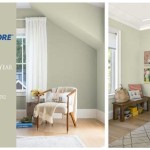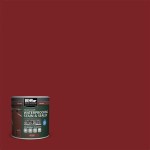What Color To Paint A Stone Fireplace
The decision of what color to paint a stone fireplace is a significant one, impacting the overall aesthetic of a room and influencing its ambiance. Unlike a brick fireplace, a stone fireplace often presents a more textured and varied surface, requiring careful consideration of color choices to both enhance and complement its natural characteristics. Several factors play a role in determining the ideal color, including the type of stone, the existing décor of the room, the desired style, and practical considerations like light reflection and maintenance.
While leaving a stone fireplace in its natural state can be appealing, painting offers an opportunity to modernize, brighten, or dramatically alter the focal point of a living space. This article will explore various color options and provide guidance on selecting the most appropriate hue for a given scenario, considering the nuances of stone fireplaces and the desired outcome.
Understanding the Existing Stone
Before selecting a paint color, it is crucial to thoroughly assess the existing stone. Identifying the type of stone – whether it is fieldstone, river rock, stacked stone, or manufactured stone veneer – is the first step. Each type possesses a unique color palette and texture, dictating which colors will harmonize best. Fieldstone, for example, often features a mix of grays, browns, and tans, while river rock can incorporate blues, greens, and even reddish hues. Stacked stone panels often have a more uniform appearance, allowing for greater freedom in color selection, but still requiring consideration of the subtle variations within the individual stones.
The existing color variations within the stone itself should inform the paint color choice. If the stone contains primarily cool tones, such as grays and blues, then using a cool-toned paint, like a soft gray or a muted blue-green, can create a cohesive and harmonious look. Conversely, if the stone is predominantly warm-toned, featuring browns, tans, and reds, then warm-toned paint colors, such as creamy whites, beige, or terracotta, will likely be more suitable. Trying to clash with the underlying tones of the stone can result in a discordant and visually unappealing result.
Consider also the texture of the stone. A heavily textured surface will interact with light differently than a smooth one. Darker colors tend to accentuate texture, while lighter colors can soften it. This can be both an advantage and a disadvantage, depending on the desired effect. If the goal is to highlight the natural ruggedness of the stone, a darker color may be appropriate. If the aim is to create a more subtle and refined look, a lighter color may be preferred.
Furthermore, evaluate the current condition of the stone. Are there any stains, discolorations, or repairs that need to be addressed before painting? These imperfections can affect the way the paint adheres to the surface and can potentially bleed through the paint layers. Proper cleaning and preparation are essential for achieving a professional and long-lasting finish. Any necessary repairs should be completed before applying primer and paint.
Exploring Color Options and Their Impact
The range of paint colors suitable for a stone fireplace is virtually limitless, but certain hues are more popular and effective than others. The choice ultimately depends on the desired aesthetic and the existing characteristics of the room.
White: White is a classic choice for painting stone fireplaces, offering a clean, bright, and modern look. It effectively lightens up a room and can create a sense of spaciousness. White also provides a neutral backdrop for other design elements, allowing furniture, artwork, and accessories to stand out. However, white can also highlight imperfections in the stone, so thorough preparation is essential. Different shades of white, from bright white to off-white and antique white, can evoke different moods. A bright white can feel crisp and contemporary, while an off-white can feel warmer and more inviting. A potential drawback of white is its susceptibility to staining, particularly from soot and smoke. Regular cleaning may be required to maintain its pristine appearance.
Gray: Gray has become increasingly popular in interior design, offering a sophisticated and versatile alternative to white. It can create a calming and elegant atmosphere, and it pairs well with a variety of other colors. Gray can also effectively conceal imperfections in the stone and is generally more forgiving of dirt and stains than white. Like white, gray comes in a wide range of shades, from light grays to dark charcoals. Light grays can create a similar effect to white, brightening up the room and providing a neutral backdrop. Darker grays can create a more dramatic and intimate atmosphere. When selecting a gray, consider the undertones. Some grays have blue undertones, while others have green or brown undertones. Choose a gray with undertones that complement the existing stone and the other colors in the room.
Beige and Cream: Beige and cream are warm, neutral colors that can create a cozy and inviting atmosphere. They are often a good choice for stone fireplaces that already have warm tones in the stone. These colors can soften the look of the stone and create a sense of warmth and comfort. Beige and cream are also relatively forgiving of dirt and stains. As with other neutral colors, there are many different shades of beige and cream to choose from. Some beiges have yellow undertones, while others have pink or gray undertones. Select a beige or cream that complements the existing stone and the other colors in the room.
Bold Colors: While neutral colors are the most common choices for painting stone fireplaces, bold colors can be used to create a dramatic and eye-catching statement. However, bold colors should be used with caution, as they can easily overwhelm a room if not used correctly. If considering a bold color, it is important to choose a shade that complements the existing stone and the overall aesthetic of the room. For example, a deep navy blue can create a sophisticated and elegant look, while a rich emerald green can add a touch of nature and vibrancy. Before committing to a bold color, it is advisable to test a small area first to ensure that it is the right choice. It is also important to consider the long-term implications of using a bold color, as it may become dated more quickly than a neutral color.
Color Washing: Color washing is a technique that involves applying a diluted paint mixture to the stone, allowing the natural texture and colors of the stone to show through. This can create a subtle and textured effect that is both visually appealing and forgiving of imperfections. Color washing is a good option for those who want to update the look of their stone fireplace without completely covering the stone. The choice of color for color washing depends on the desired effect. A light-colored wash can brighten up the stone, while a darker-colored wash can add depth and dimension. It is important to experiment with different dilutions and colors to achieve the desired result. This technique can also be used to tie together disparate colors in the stone, creating a more unified and harmonious look.
Practical Considerations and Preparation
Beyond aesthetic considerations, several practical factors influence the choice of paint color for a stone fireplace. These include the amount of natural light in the room, the style of the fireplace, and the desired level of maintenance.
Light Reflection: Lighter colors reflect more light than darker colors, making them a good choice for rooms with limited natural light. A white or light gray fireplace can significantly brighten up a dark room. Conversely, darker colors absorb light, which can make a small room feel even smaller and more enclosed. If the room already has ample natural light, then darker colors can be used to create a more dramatic and intimate atmosphere. The location of the fireplace within the room also plays a role. A fireplace placed in a corner may benefit from a lighter color to maximize light reflection, while a fireplace on a larger wall may be able to handle a darker color without feeling overwhelming.
Style of the Fireplace: The architectural style of the fireplace should also be considered when choosing a paint color. A traditional fireplace with ornate details may benefit from a classic color like white or beige, while a modern fireplace with clean lines may look better in a more contemporary color like gray or black. The surrounding décor of the room should also be taken into account. The paint color of the fireplace should complement the furniture, artwork, and other accessories in the room.
Maintenance: Certain paint colors are more forgiving of dirt and stains than others. White, for example, tends to show dirt and soot more easily than darker colors. If maintenance is a concern, then a darker color or a color with a matte finish may be a better choice. A paint with a durable and washable finish is also recommended, as this will make it easier to clean the fireplace and remove any dirt or stains. A high-quality acrylic latex paint is typically the best option for painting stone fireplaces, as it is durable, washable, and resistant to heat. Before painting, the stone should be thoroughly cleaned and primed to ensure proper adhesion and prevent staining.
Preparation is Key: Proper preparation is essential for achieving a professional and long-lasting paint job. Start by thoroughly cleaning the stone fireplace to remove any dirt, dust, and debris. Use a wire brush to scrub away any loose material. If there are any stains, try to remove them with a mild detergent and water. Rinse thoroughly and allow the stone to dry completely. Next, apply a masonry primer to the stone. Primer helps the paint adhere to the stone and prevents staining. Allow the primer to dry completely before applying the paint. Apply two coats of paint, allowing each coat to dry completely before applying the next. Use a high-quality brush or roller designed for rough surfaces to ensure even coverage. Finally, consider applying a clear sealant to protect the paint from moisture and staining. This is particularly important for fireplaces that are used frequently.

How To Choose Colour Around A Stone Fireplace

Which Stone Colour Is Best For Your Fireplace Surround

How To Choose Colour Around A Stone Fireplace

How To Paint A Stone Or Brick Fireplace Easy Diy Building Bluebird

Whitewashing A Stone Fireplace With Grey Paint Land Of Laurel

Black Painted Fireplace How To Paint Stone

Best Stone Fireplace Paint Colors You Should Consider Painting

Black Painted Fireplace How To Paint Stone

Any Advice On Paint Colors To Complement This Fireplace

How To Paint A Stone Fireplace Vlog 004
Related Posts








